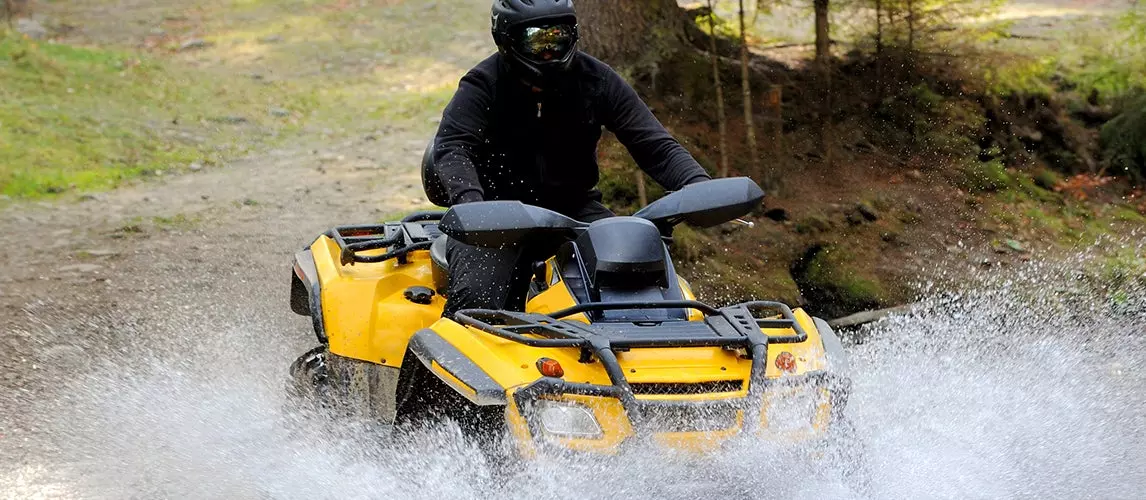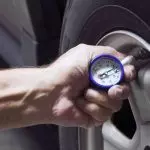There are so many additional features that can enhance your ATV riding experience. One of these features was created to shield certain components from water during deep mud riding and other similar activities.
Related Post: Best ATV Tires
What is Snorkeling?
Snorkeling is a term used to describe the system that can be installed to prevent your ATV from paying the price of marsh and creek adventures. This system was built to keep water from entering the belt drive or your air intake of your engine and ruining these valuable components.
Many riders enjoy exploring challenging terrain and their journey can take them through swamps and rivers that are home to mud and most importantly, water. Ripping through unpredictable terrain can be fun, but it can also take its toll on your ATV. The snorkel system was not meant to turn your vehicle into a submarine. Its main job is to give your ATV an outlet to breathe when the intake is submerged during your water-filled excursions.
Being underwater means that the air intake will be unable to deliver clean air to the engine. This can be problematic for several reasons. Repeated exposure to moisture can lead to rust and once rust grabs hold of your engine, it can spread to other components and cause major damage to your ATV. Exhaust portals and electric connections may need snorkeling as well.
A snorkeled ATV has exhaust pipes sticking out in front of the driver. These pipes or snorkels have open ends that remain above water. There are many different components that can be snorkeled such as the differential vents and the clutch belt housing intake and exhaust. Snorkeling electric connections and carb vent tubes is also recommended. Snorkeling the air intake involves running the pipe out of the air box right below the plastic and into the highest position possible on your ATV. This is mainly right in front of the handlebars.
Snorkeling can be a lifesaver during off-road adventures that involve extreme mud riding. You can use this system to keep the transmission belt from slipping and putting an end to your thrill ride. All you need to do is snorkel the CVT transmission in order to cool the belt and the other two components as well. In normal circumstances, the variable transmission vents allow air to circulate through the working components to prevent heat from building and causing problems during your journey. These vents are critical to the belt and will most definitely fail to function once your ATV begins wading through mud or water. Your belt will run hotter as a result and will eventually break down and leave you stranded on the trail. This might not happen overnight but the CVT transmission will most certainly benefit from having the vents raised to a higher position on your ATV.
Types of Snorkel Kits
There is no shortage of snorkel kits on the market today. These kits provide clean air to the engine and other parts that require venting as well. ATV and deep-water enthusiasts who want to snorkel their off-road vehicle on their own are advised to look for systems that are easy to install and repair. Some kits are already partially assembled and come with detailed instructions to help you get the job done. Others may require the help of a professional.
Different snorkel kits cater to different ATV models, so make sure that you buy the right kit for your vehicle. Brands like Polaris and Honda have their own kits for their off-road vehicles. The kits typically include pipes that are often made of PVC as well as rubber grommets and bellows to keep water out of differentials and transmission. Others consist of molded silicon hoses and heavy-duty vinyl tubing. PVC pipes are considered a favorable option among riders since they are easy to repair or replace. These pipes are resistant to corrosion and are budget friendly as well.
Some premium snorkel kits come with a steel crash plate. This feature ensures that your newly installed system does not get detached from the air box in the event of an accident. This plate is usually mounted to the rack of your ATV and links the exhaust vents to the PVC snorkel located below the plastic. If the exhaust pipes sitting at the top suffer any damage or fall off entirely, you can simply remove the broken pieces and screw new ones in the top of the plate. This will save you from dismantling the old snorkel system and purchasing a new one to take its place. Most plates are made durable by covering them in a rubberized undercoating. Off-road enthusiasts who spend their weekends exploring new terrain can install radiator hoses that are more flexible and less prone to breakage during a crash. These hoses were built to last and will bend instead of break if your ATV ever rolls over. Thinking outside the box and searching for the best components for your snorkel system can save you money in the long run.
When to Snorkel Your ATV
If you are in the habit of ripping through marshes and rivers without hesitation and embarking on deep water excursions with your ATV, then snorkeling becomes a must to avoid damaging your vehicle. Some riders may be tempted to push their machine to the limits but going down the check-and-see road is not recommended and can result in costly repairs, among other things.
It is important to note that failing to install the snorkel system correctly can cause major damage to your ATV. This damage can take the form of pipe leakage, especially if the pipes were the wrong length. Incorrect installation can also result in system failure if the pipes are placed too close to a heat source. This can cause the plastic to gradually deteriorate and become brittle. Once the material cracks, mud and water will flood the pipes and cause serious harm to the engine and transmission. Therefore, taking the DIY approach can sometimes be risky, especially if you have never installed this kind of system before.
Sources:
- How Off-Road ATVs Work – HowStuffWorks









